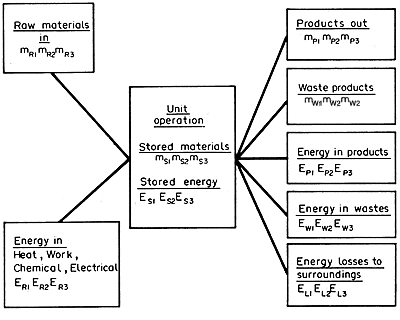CHAPTER
2
MATERIAL AND ENERGY BALANCES
Material quantities, as they pass through food processing operations,
can be described by material balances. Such balances are statements on
the conservation of mass. Similarly, energy quantities can be described
by energy balances, which are statements on the conservation of energy.
If there is no accumulation, what goes into a process must come out.
This is true for batch operation. It is equally true for continuous operation
over any chosen time interval.
Material and energy balances are very important in the food industry. Material balances are fundamental to the control of processing, particularly in the control of yields of the products. The first material balances are determined in the exploratory stages of a new process, improved during pilot plant experiments when the process is being planned and tested, checked out when the plant is commissioned and then refined and maintained as a control instrument as production continues. When any changes occur in the process, the material balances need to be determined again.
The increasing cost of energy has caused the food industry to examine means of reducing energy consumption in processing. Energy balances are used in the examination of the various stages of a process, over the whole process and even extending over the total food production system from the farm to the consumer's plate.

